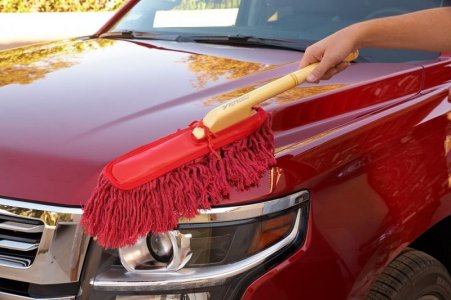debodun
SF VIP
- Location
- way upstate in New York, USA
I took my car to a garge a few weeks ago and they charged me $75 just to look at it (their term was "diagnostics") and they didn't fix anything.
I started life as an apprentice mechanic in the early 80’s at a Vauxhall dealership (then a subsidiary of GM). I now work in engineering for a car manufacture. Back in the 80’s I thought labour costs were reasonable. I usually work on my own cars, only taking them to a garage if I can’t be bothered to work on them, or if it’s inconvenient for me. I’ve never taken my cars to a main dealer; well I say that, unless it was necessary for warranty. I use a local reputable independent garage, and I don’t even ask them what their labour costs are. What they charge me seems reasonable.One reason why auto repair is so expensive is because of the labor rate. If you take your vehicle to an auto dealer for repair, you will pay anywhere from $100-$150 an hour just for labor.
I have what some might regard as special tools at home, but I get your point. Some special tools I would consider never buying, unnecessarily expensive for something I might only use once. I have at times though borrowed special tools.What makes it even worse is that if you want to work on your own vehicle sometimes you will need special tools and you can’t just walk into an auto parts store and buy the special tool until it’s been on the market for a year or two. That way, they force you to take your vehicle to a dealer. I do mist if my win work, but if I need a special tool, like for switching out a TPMS, I had no choice, but to allow the dealer to perform the work. Thankfully, the unit was still under warranty.
If you take your vehicle to a privately owned garage, they may charge you only about $60 an hour for their labor rate, plus the price of the parts. The lady up the street showed me her bill a few weeks ago and she was charged $45 labor to change her cabin air filter, which takes about 10 minutes and about $180 to change her serpentine belt, plus the price of the belt, which takes about an hour to change or her Mercedes.
TPMS Calibration
Any time you inflate, change, or rotate one or more of the tires, you need to recalibrate the system. The calibration process requires approximately 30 minutes of cumulative driving at speeds between 30–65 mph.
I never knew that!
When any one of the four TPMS modules go bad, a red light comes on the dash warning you to get it fixed. We have mechanical state inspection once a year here in Virginia. They check brakes, shocks or struts, steering linkage parts, etc. If anything does not meet specs, it must be replaced or repaired before the mechanic will put the inspection sticker for that year on your windshield.I started life as an apprentice mechanic in the early 80’s at a Vauxhall dealership (then a subsidiary of GM). I now work in engineering for a car manufacture. Back in the 80’s I thought labour costs were reasonable. I usually work on my own cars, only taking them to a garage if I can’t be bothered to work on them, or if it’s inconvenient for me. I’ve never taken my cars to a main dealer; well I say that, unless it was necessary for warranty. I use a local reputable independent garage, and I don’t even ask them what their labour costs are. What they charge me seems reasonable.
However, at work this Tuesday evening I asked a couple of people what main dealers change them. I was shocked when they said £100 an hour ($125)
I have what some might regard as special tools at home, but I get your point. Some special tools I would consider never buying, unnecessarily expensive for something I might only use once. I have at times though borrowed special tools.
I remember having a diag engine code on my BMW. It was as issue to do with the Inlet Manifold Pressure Sensor (can't remember specifically what BMW called it). The engine would sometimes cut out road junctions. I went onto eBay, amazon and some motor factor website to prise up an alleged genuine part. Then I called the BMW dealer; the sensor from BMW was around £5 less than allegedly genuine parts on line. Needless to say I bought it from BMW; took me 10 minutes to fit.
You mentioned the price you paid for 2 TPMS sensors. Spoke with someone at work who used to have a Ford Focus. He said he had to have one TPMS sensor replaced. He seems to remember it being £60 ($75) for the part. I didn't think of asking him what the labour charge was though.

When any one of the four TPMS modules go bad, a red light comes on the dash warning you to get it fixed. We have mechanical state inspection once a year here in Virginia. They check brakes, shocks or struts, steering linkage parts, etc. If anything does not meet specs, it must be replaced or repaired before the mechanic will put the inspection sticker for that year on your windshield.
If it wasn't required to have the TPMS replaced, most drivers would drive with the red light on forever and never get it replaced. Any time I get a red light on my dash that reads "See Dealer Soon". I make an appointment and they put the vehicle on the analyzer and that tells the mechanic what needs replaced or repaired. I am very fussy about my vehicles. They must be 100% perfect. I spent 3 hours yesterday washing and waxing my new Buick just because I do that ritual twice a year. Once in the spring and once in the fall. I also detail the inside with leather conditioner and scrub the mats and also steam clean the carpet what there is of it. I also take my vehicles to the car wash and power spray the engine to keep it looking new and no grease or oil showing. That's just me. Not everyone is so meticulous about their vehicles. No smoking is allowed in any of my vehicles and all 3 are kept in the garage.
Here in the U.S., this is pollen season and that stuff from the trees gets all over your vehicles, so I use what is called a "California Duster" to run over it that takes off the pollen before driving it. The head is treated with some kind of spray that collects the dirt and dust.
View attachment 285204

